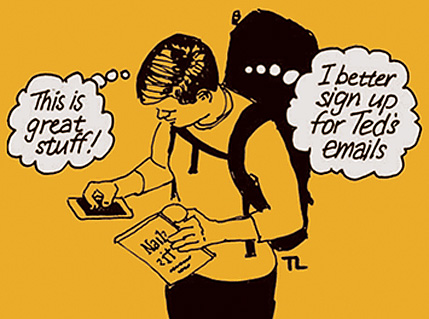Three Keys To Increasing Your Design Fees

Design firms routinely under price their work. It seems as though they don’t trust their own value, thinking, “If I can do it, it must be easy.” Therefore, “I don’t dare ask for…” whatever.
It’s no wonder that the vast majority of design firms in the US, UK and EU have fewer than ten employees. They’ve never been comfortable asking for the kind of money that will adequately support profitability and growth.
However, there are some easy to implement tactics that can tip the balance in your favor.
1. The List
Make a list of documented contributions your firm has made to clients’ success and carry it with you everywhere. Then, when you are feeling anxious, pull it out and review. Tell yourself, “thank you very much, and you (client) can’t get what I do anywhere else.”
The list will help you remember that you’ve helped clients move millions, in some cases billions, of dollars in goods and services. Your work has sold stock, increased hits, changed minds. Remember these successes.
2. Step Back From Your Work
Take a step back and see your firm’s work as “our work.” To escape the commodity trap, you must create enough distance to see the forest from the trees. “My work’ is too personal. Learn to care strongly about the work, but with enough distance to remove yourself from feelings of neediness that result from it being all about me, me, me.
3. Understand Your Opposite
Corporations and procurement officers are people too, and their tactics, power trips, competitions and often ridiculous processes can be turned against them. Only deal with the people who need your services. Deal only with purchasing on the quantifiable: price, schedule and deliverables.
See to the people with the need. Engage them in a discussion — ask lots of probing questions and listen carefully to the explanations of their needs, issues, and interests beyond the issues.
The purchasing mindset makes a single-minded pursuit of “more for less.” This is a severely flawed strategy for corporations because goals of growth, increased margins or changes in public opinion, cannot be achieved by reducing project costs or skimping on deliverables. They are only achieved following a thorough analysis of the problem and a joint effort between corporation and creative to determine the appropriate path to achieve their goals. You can’t do that through an RFP.
Get an audience with those who have the need so the right questions can be asked. By the way, if you can’t get a meeting with the folks who need your skills, walk away from the “opportunity,” because it isn’t an opportunity.
Key questions to ask include:
- Why this project at this time?
- What are the corporate goals for the project? What are your goals?
- What effect will this project have on your company, division, yourself and the world?
- How do you envision the project moving forward?
- Have you or the corporation undertaken anything like this in the past?
- What was your experience?
- What effect will this project have on the market place, on competitors?
- Who will we report to and why?
- Who will we need to gain approvals from as we move forward?
- Who will be on the project team from the company? Why?
- What are your competitors doing that will shape this project?
- What’s the model for success? Failure?
- How is this effort viewed within the corporation?
- Are there groups who will be advanced by the project?
- Are there groups who will feel threatened?
The more questions asked the better. Questions signal interest and intelligence. And, the more the client talks, the better they’ll feel about you. It’s much more powerful to ask and listen carefully than to tell. Through the process of exploration, a bond of mutuality will be formed between the creative and the prospect. This bond is key and will lead to a successful engagement and to an addition to your personal list of successes.
From confidence, distance and mutuality comes power and the potential for winning on terms that will let you do what you do best: create.
This post originally appeared at Design Taxi and Dexigner.
For more insights and strategies specifically written for creatives, see
“Nail It: Stories for Designers on Negotiating with Confidence”
by Ted Leonhardt available on Amazon.

